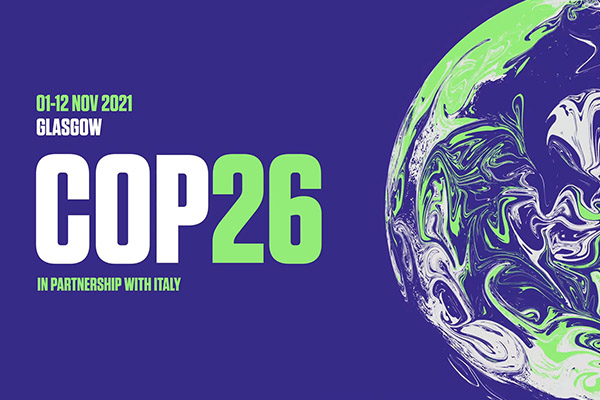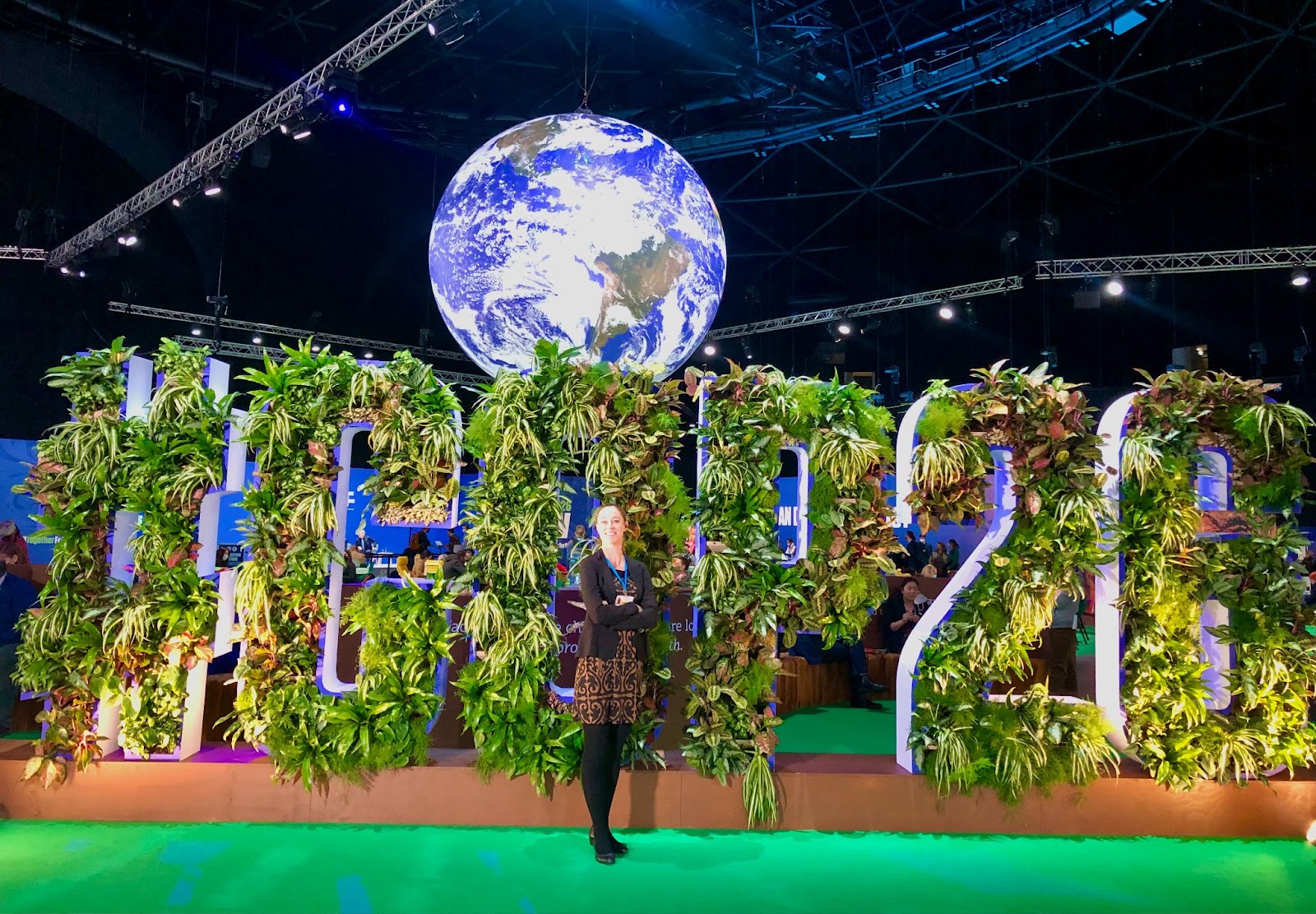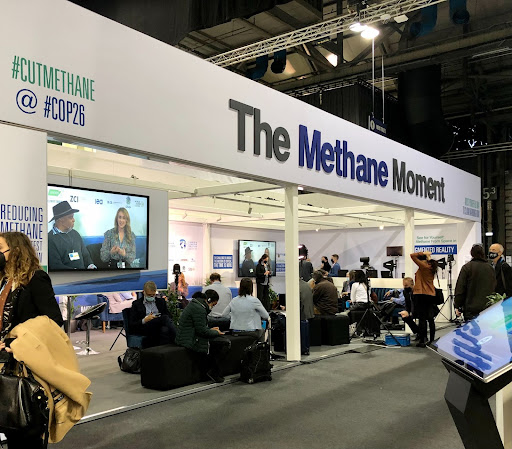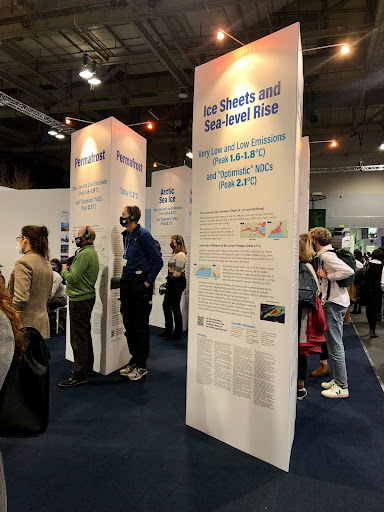E3SM Scientist’s Experience at COP26
 During the first two weeks of November 2021, E3SM scientist and co-deputy lead of the biogeochemical cycle group Jennifer Holm attended the UN Climate Change Conference in Glasgow, Scotland, United Kingdom, named COP26. The COP26 summit brought together representatives from countries around the world to accelerate action towards the goals of the Paris Agreement and the UN Framework Convention on Climate Change. By the end of the conference and related negotiations, representatives created the ‘Glasgow Climate Pact’.
During the first two weeks of November 2021, E3SM scientist and co-deputy lead of the biogeochemical cycle group Jennifer Holm attended the UN Climate Change Conference in Glasgow, Scotland, United Kingdom, named COP26. The COP26 summit brought together representatives from countries around the world to accelerate action towards the goals of the Paris Agreement and the UN Framework Convention on Climate Change. By the end of the conference and related negotiations, representatives created the ‘Glasgow Climate Pact’.
Below are Jennifer’s thoughts on her experience:
“Attending COP26 was a unique experience, and I was happy to represent E3SM and LBNL to understand more about how our climate science, nature-climate feedbacks, and carbon cycling play the main role in international climate change negotiations. One major takeaway from the first week was a very large appreciation and respect towards the scientific community in getting us to where we need to be for COP26 climate negotiations, especially with the recent release of the IPCC AR6 Report. For example, the following text from the IPCC was recognized by the large international community at COP26: “Climate change is already affecting every region in the world, and in multiple ways. These changes we experience will increase with further warming. However, with swift action, some impacts could be slowed and others could be stopped by limiting the warming of the planet.” I think this is very relevant with the modeling we do in E3SM, because future land and ocean carbon sinks will be less effective with cumulative emissions, and thus more CO2 left in the atmosphere. It should also be noted that the models currently in AR6 do not have adequate representation of methane or wildfires when making the future scenario predictions used in negotiations like COP26. Therefore, during the second week of COP26, an open letter from scientists stated that strong, rapid, and sustained reductions in GHG emissions are needed (Scientists urge parties at COP26 to fully acknowledge climate change science).
An additional positive takeaway from COP26 that pertains to E3SM research was a large call to reduce methane emissions and the critical role of peatlands, stopping deforestation and land degradation, and a stronger focus (more than any previous COPs) of looking towards nature-based solutions to mitigate and adapt to climate change. As we know, methane is a major short-lived climate forcing agent and the most important present-day GHG forcer after CO2, and has contributed to about 20% of the observed warming since preindustrial times. A major advancement was that over 130 countries have committed to halt and reverse forest loss and land degradation by 2030. This can play a major role in the adjustment of future land-use change modeling, such as forest timber production vs. forest carbon storage, using E3SM-GCAM in the continual development of the E3SM Project.
While at COP26, Secretary of Energy Jennifer Granholm excitedly announced the “Energy Earthshots Initiative” (Energy Earthshots Initiative), with the Carbon Negative theme being a critical role in reaching U.S.’s 2050 net-zero carbon goals. This is a goal to remove gigatons of CO2 from the atmosphere, and reliably store it in the Earth – a topic that can be researched and addressed via E3SM. Overall, while listening to the wide array of science talks, UN negotiations, and announcements of new climate resilient initiatives (like the DOE’s EarthShots Initiative), I saw that COP26 was an opportunity to showcase what’s been done by many scientists as well as countries in fighting climate change, but also to take back to everyone’s countries what is needed to drastically move forward to stay at 1.5 degree warming.“





